Disclaimer: I purchased the DM-480 with my own money. This review is based on my subjective opinion. I'm no spring chicken so I can't hear much above 17khz, and I like bassy, fun sound. Your milage may vary, as may your tastes.
I fell in love with the Dunu DK-2001 for being one of the best sounding mid-fi IEMs on the market. I ordered the DM-480 curious to explore the Dunu line and see how it would stack up against an offering ~5x it's price.
I'd never heard of an isobaric push configuration before. Both drivers are enclosed in a single unit, and fire together to reduce the air pressure and improve the speed and control of the driver. The 8mm unit pumps out a lot of sound for it's size.

Build quality and ergonomics
The housing for the DM-480 is pretty small too. It's not quite lozenge of the DK-2001, instead featuring a more traditional 3d-printed shape with a fin to provide a little stability in the ear. They fit comfortably for hours on end.
At $60, it's no surprise that the cable included isn't anything to write home about. It's a little silver-looking thing with a smooth plastic sheathing. On the plus side, it's supple and tangle free without microphonics. On the downside, it's thin enough that it adds a bit of resistance to the IEMs. Normally I'm not one to think of cable affecting sound much, but after @Dsnuts suggested it, I tried rolling to a thicker cable with a lower impedance, and it actually made a small difference in the sound, particularly in the mids. Color me surprised!
Sound
The DM-480 features an unusually linear rise from the lower mids that continues all the way through to the sub-bass. It presents with weight and rumble, but lacking a distinct mid-bass hump, it doesn't bloat as much as most basshead IEMs this cheap. The tuning is bass forward, but not completely dominated by the low end like the Polaris II.
Drums have good amount of impact and slam. It's also worth noting that the bass is well controlled for the price - virtually no distortion at my preferred (low) listening levels. Normally when I listen to bass-heavy tracks on an IEM of this price I encounter some mixture of distortion, weak dynamics, or lack of texture; on the DM-480, all of these fared reasonably well.
The midrange is clear, but slightly distant - particularly with the stock cable. I generally like a bit more presence in the midrange. On a few albums, I felt like the weakest response point in the mids lined up closely with some male vocalists leading to instruments stealing the show from lyrics. Switching from the stock cable to a thicker cable with lower impedance helped give the midrange more presence.
The high end has some energy and sparkle to it. I occasionally found this a little fatiguing or sibilant on some tracks, but for the most part it did a great job of adding energy to pop and EDM. The finer details in the treble don't resolve clearly - cymbals lack the subtlety of a proper shimmer, but no bad for the price.
The DM-480 has fairly narrow staging and with everything presenting relatively close to the listener. They do have decent layering with each instrument rendered with enough space that I can still pick them out in reasonably well-mastered music.
Comparing to...
...the Dunu DK-2001
At roughly 5x the cost, the DM-480's bigger brother the DK-2001 brings a lot of refinement to the table. Every time I switched to the DK-2001 after a while listening to the DM-480 it was an obvious jump up in soundstage, clarity, and detail.
Both of the Dunu offerings being compared have a good low end featuring bass without bloating over the midrange. The DM-480 isn't quite as fast or controlled as the DK-2001 but they both bring a decent weight to music. The DM-480 is less reserved and pushes the low end forward more than the DK-2001.
The mids and treble is where the DK-2001 really outshines the DM-480, bringing resolution and refinement normally associated with much higher end headphones. The DM-480 can't really compete with this kind of detail and speed in the upper end. In particular, the DK-2001 excels at natural sounding vocals while they are occasionally a little distant on the DM-480, depending on the singer and album. This accuracy does come at the cost of richness - if you prefer a thicker, slightly less airy presentation the cheaper sibling is your best bet.
The DK-2001 has a very open design that offers minimal isolation. This open, vented design gives it a lot of transparency and a wider soundstage, but at the cost of requiring a moderately quiet listening environment. The DM-480 on the other hand does a much better job of isolating the listener, although at the expense of a narrower, shallower soundstage.
Obviously, the stock cable on each is no competition whatsoever. The DM-480 ships with a serviceable but not-great cable. The DK-2001 ships with such an ergonomic and generally lovely cable, that I purchased a second one for use with my Polaris II, and am considering getting more of their cables for my other IEMs.
The DM-480 isn't as efficient as its more expensive kin (20Ω for the DM-480 vs 13Ω for the DK-2001). This earphone sounds better with the volume knob a little higher and a little more current driving it. This isn't to say that it's a particularly hard to drive IEM (I was able to power it easily with a bluetooth dongles like the Radsone Earstudio or the Fiio BTR5), but it does scale up a bit when powered by something a little more robust. One advantage to the decreased sensitivity on the DM-480 is a lack of hiss that plagues so many more sensitive IEMs, particularly those with balanced armatures like the DK-2001.
Between the two, I obviously prefer the DK-2001 if I'm in a quiet listening environment although the DM-480 might edge it out when I'm walking outside. In that case I prefer the cheaper carry and the increase in isolation the DM-480 provides. It's not like the nuanced detail of a really nice earphone can pierce through the din of the outside world anyway.
That being said, at 5x the price, I've got to hand it to the DM-480 for being a totally decent budget basshead IEM and a better value. It's a no-brainer between the two for anyone not looking to spend $300 on an earphone. This goes double if you're just going to plug into your phone and not a midrange DAP or some fancy DAC/AMP combo to get the best out of the DK-2001.
...the Fragrant Zither Galaxy T2
One of the few IEMs I have priced roughly the same as the DM-480, the T2 has more treble extension, and generally more detailed upper mids and treble. Where the T2 falls short is in the lower end, with less speed and precision when rendering deep basslines. The DM-480 is warmer than the T2, with a richer timbre in the mids, although perhaps a bit less transparent than the T2. My musical tastes generally lean more to the Dunu than the TFZ offering. Trebleheads on the other hand will prefer the T2s presentation to the DM-480.
...the Blon BL-03
The BL-03 are a great earphone for their ~$30 price. Ergonomics and their unusable cable aside, they have a really pleasant tone and timbre across their range, and can render details competing with IEMs 5-10x their cost.
The DM-480 handles sub-bass better than the BL-03, but the Blon wins when it comes to the detail in the mids and treble. In terms of tonal balance, I suspect it comes down to preference of if the listener wants their bass/lower mids or mids/treble to have more richness and detail.
Although I'm not super impressed with the DM-480 stock cable, it's at least usable. The Blon on the other hand, ships with a cable unusable in the human ear, with a fitted curve that wraps around a good 60-80 degrees further than it should. Cable rolling on the Dunu is nice, but it's flat out necessary on the Blon, which eats into any price advantage the Blon might have had.
Final thoughts
All in all, I'm impressed. Sure, I have 'better' headphones, but the DM-480 is really nice to listen to, and sounds better than many other basshead choices of a similar price. It's certainly going in the rotation of IEMs I use when out and about. If your budget tops out in the $75 range and you like bassy headphones, consider the DM-480 to be a really nice contender in the space. If you don't like bassy headphones, look elsewhere: the DM-480 won't be your cup of tea.
Appendix: Selected listening notes
In addition to my normal headphone tester playlist, I also listened to a few albums with the DM-480.
In The Court of the Crimson King by King Crimson - I was actually surprised by the clarity and dynamic range the DM-480 was able to render on this classic album. The recording captures a lot of dynamics for being from 1969, and these IEMs presented them with impact while still sounding good for the quieter passages, flutes, etc.
The New Abnormal by the Strokes - Julian Casablancas' vocals clash with the weakest frequencies on the DM480 and sound slightly distant for my tastes. Re-listening after switching to the thicker cable helped bring the vocals closer. The percussion work shines with the linear bass rendition, and the guitars and high hats have a fun energy. Brooklyn Bridge to Chorus is a good torture test for treble attack/decay - admirable performance for a dynamic driver, but falls behind hybrids with balanced armatures or electrostatic drivers.
The King of Limbs & In Rainbows by Radiohead - this is another case where vocals and the DM-480's midrange intersect to make Thom York sound a little distant. I did a lot of a/b testing against the DK-2001 on these albums, and while DM-480 sounds respectable on its own, compared directly, the vocals are a lot more front and center on the DK-2001 with lots of detail and clarity.
Random Access Memories by Daft Punk - The drums and electronic basslines that interweave through this album had appropriate weight, with a surprisingly textured presentation. The intro to Giorgio by Moroder is one of my standard test tracks for staging; the DM480 faired poorly, presenting Mr. Giorgio and the cafe sounds together, rather than placing him across the table, with the cafe surrounding.
WHEN WE ALL FALL ASLEEP, WHERE DO WE GO? by Billie Eilish - The DM-480 does really well on this album. Billie's vocals (and the production work by Finneas) avoid the vocals problems a few other albums had. All the electronic basslines have excellent presence and impact, particularly for the price.
B.P. Empire by Infected Mushroom - The DM-480 provided both sparkle and slam for this early-2000's EDM. Getting the right weight for some of the deepest bass (Unbalanced and B.P. Empire) required a slightly higher listening volume than I personally prefer, but nothing dangerous. Dancing with the Kadafi's non-electronic instruments felt very smooth and natural, and had good layering on top of the bassline.
Fellowship of the Ring by Howard Shore (and others) - I've been watching through the Lord of the Rings movies in the last week while I work. I used the DM-480 for the first one, the DK-2001 for The Two Towers, and swapped out for the Andromeda Gold for Return of the King. The DM-480 makes for a decent choice for multimedia - the rumbly low end made the battle sequences exciting, while still allowing the orchestral soundtrack to shine through. Some of the horns in particular felt wonderfully rich and present. For the most part, dialog was clear. If money is no object, I'd prefer the DK-2001 for general home theater use, over even the Andromeda for being a little too analytical.
I fell in love with the Dunu DK-2001 for being one of the best sounding mid-fi IEMs on the market. I ordered the DM-480 curious to explore the Dunu line and see how it would stack up against an offering ~5x it's price.
I'd never heard of an isobaric push configuration before. Both drivers are enclosed in a single unit, and fire together to reduce the air pressure and improve the speed and control of the driver. The 8mm unit pumps out a lot of sound for it's size.

Build quality and ergonomics
The housing for the DM-480 is pretty small too. It's not quite lozenge of the DK-2001, instead featuring a more traditional 3d-printed shape with a fin to provide a little stability in the ear. They fit comfortably for hours on end.
At $60, it's no surprise that the cable included isn't anything to write home about. It's a little silver-looking thing with a smooth plastic sheathing. On the plus side, it's supple and tangle free without microphonics. On the downside, it's thin enough that it adds a bit of resistance to the IEMs. Normally I'm not one to think of cable affecting sound much, but after @Dsnuts suggested it, I tried rolling to a thicker cable with a lower impedance, and it actually made a small difference in the sound, particularly in the mids. Color me surprised!
Sound
The DM-480 features an unusually linear rise from the lower mids that continues all the way through to the sub-bass. It presents with weight and rumble, but lacking a distinct mid-bass hump, it doesn't bloat as much as most basshead IEMs this cheap. The tuning is bass forward, but not completely dominated by the low end like the Polaris II.
Drums have good amount of impact and slam. It's also worth noting that the bass is well controlled for the price - virtually no distortion at my preferred (low) listening levels. Normally when I listen to bass-heavy tracks on an IEM of this price I encounter some mixture of distortion, weak dynamics, or lack of texture; on the DM-480, all of these fared reasonably well.
The midrange is clear, but slightly distant - particularly with the stock cable. I generally like a bit more presence in the midrange. On a few albums, I felt like the weakest response point in the mids lined up closely with some male vocalists leading to instruments stealing the show from lyrics. Switching from the stock cable to a thicker cable with lower impedance helped give the midrange more presence.
The high end has some energy and sparkle to it. I occasionally found this a little fatiguing or sibilant on some tracks, but for the most part it did a great job of adding energy to pop and EDM. The finer details in the treble don't resolve clearly - cymbals lack the subtlety of a proper shimmer, but no bad for the price.
The DM-480 has fairly narrow staging and with everything presenting relatively close to the listener. They do have decent layering with each instrument rendered with enough space that I can still pick them out in reasonably well-mastered music.
Comparing to...
...the Dunu DK-2001
At roughly 5x the cost, the DM-480's bigger brother the DK-2001 brings a lot of refinement to the table. Every time I switched to the DK-2001 after a while listening to the DM-480 it was an obvious jump up in soundstage, clarity, and detail.
Both of the Dunu offerings being compared have a good low end featuring bass without bloating over the midrange. The DM-480 isn't quite as fast or controlled as the DK-2001 but they both bring a decent weight to music. The DM-480 is less reserved and pushes the low end forward more than the DK-2001.
The mids and treble is where the DK-2001 really outshines the DM-480, bringing resolution and refinement normally associated with much higher end headphones. The DM-480 can't really compete with this kind of detail and speed in the upper end. In particular, the DK-2001 excels at natural sounding vocals while they are occasionally a little distant on the DM-480, depending on the singer and album. This accuracy does come at the cost of richness - if you prefer a thicker, slightly less airy presentation the cheaper sibling is your best bet.
The DK-2001 has a very open design that offers minimal isolation. This open, vented design gives it a lot of transparency and a wider soundstage, but at the cost of requiring a moderately quiet listening environment. The DM-480 on the other hand does a much better job of isolating the listener, although at the expense of a narrower, shallower soundstage.
Obviously, the stock cable on each is no competition whatsoever. The DM-480 ships with a serviceable but not-great cable. The DK-2001 ships with such an ergonomic and generally lovely cable, that I purchased a second one for use with my Polaris II, and am considering getting more of their cables for my other IEMs.
The DM-480 isn't as efficient as its more expensive kin (20Ω for the DM-480 vs 13Ω for the DK-2001). This earphone sounds better with the volume knob a little higher and a little more current driving it. This isn't to say that it's a particularly hard to drive IEM (I was able to power it easily with a bluetooth dongles like the Radsone Earstudio or the Fiio BTR5), but it does scale up a bit when powered by something a little more robust. One advantage to the decreased sensitivity on the DM-480 is a lack of hiss that plagues so many more sensitive IEMs, particularly those with balanced armatures like the DK-2001.
Between the two, I obviously prefer the DK-2001 if I'm in a quiet listening environment although the DM-480 might edge it out when I'm walking outside. In that case I prefer the cheaper carry and the increase in isolation the DM-480 provides. It's not like the nuanced detail of a really nice earphone can pierce through the din of the outside world anyway.
That being said, at 5x the price, I've got to hand it to the DM-480 for being a totally decent budget basshead IEM and a better value. It's a no-brainer between the two for anyone not looking to spend $300 on an earphone. This goes double if you're just going to plug into your phone and not a midrange DAP or some fancy DAC/AMP combo to get the best out of the DK-2001.
...the Fragrant Zither Galaxy T2
One of the few IEMs I have priced roughly the same as the DM-480, the T2 has more treble extension, and generally more detailed upper mids and treble. Where the T2 falls short is in the lower end, with less speed and precision when rendering deep basslines. The DM-480 is warmer than the T2, with a richer timbre in the mids, although perhaps a bit less transparent than the T2. My musical tastes generally lean more to the Dunu than the TFZ offering. Trebleheads on the other hand will prefer the T2s presentation to the DM-480.
...the Blon BL-03
The BL-03 are a great earphone for their ~$30 price. Ergonomics and their unusable cable aside, they have a really pleasant tone and timbre across their range, and can render details competing with IEMs 5-10x their cost.
The DM-480 handles sub-bass better than the BL-03, but the Blon wins when it comes to the detail in the mids and treble. In terms of tonal balance, I suspect it comes down to preference of if the listener wants their bass/lower mids or mids/treble to have more richness and detail.
Although I'm not super impressed with the DM-480 stock cable, it's at least usable. The Blon on the other hand, ships with a cable unusable in the human ear, with a fitted curve that wraps around a good 60-80 degrees further than it should. Cable rolling on the Dunu is nice, but it's flat out necessary on the Blon, which eats into any price advantage the Blon might have had.
Final thoughts
All in all, I'm impressed. Sure, I have 'better' headphones, but the DM-480 is really nice to listen to, and sounds better than many other basshead choices of a similar price. It's certainly going in the rotation of IEMs I use when out and about. If your budget tops out in the $75 range and you like bassy headphones, consider the DM-480 to be a really nice contender in the space. If you don't like bassy headphones, look elsewhere: the DM-480 won't be your cup of tea.
Appendix: Selected listening notes
In addition to my normal headphone tester playlist, I also listened to a few albums with the DM-480.
In The Court of the Crimson King by King Crimson - I was actually surprised by the clarity and dynamic range the DM-480 was able to render on this classic album. The recording captures a lot of dynamics for being from 1969, and these IEMs presented them with impact while still sounding good for the quieter passages, flutes, etc.
The New Abnormal by the Strokes - Julian Casablancas' vocals clash with the weakest frequencies on the DM480 and sound slightly distant for my tastes. Re-listening after switching to the thicker cable helped bring the vocals closer. The percussion work shines with the linear bass rendition, and the guitars and high hats have a fun energy. Brooklyn Bridge to Chorus is a good torture test for treble attack/decay - admirable performance for a dynamic driver, but falls behind hybrids with balanced armatures or electrostatic drivers.
The King of Limbs & In Rainbows by Radiohead - this is another case where vocals and the DM-480's midrange intersect to make Thom York sound a little distant. I did a lot of a/b testing against the DK-2001 on these albums, and while DM-480 sounds respectable on its own, compared directly, the vocals are a lot more front and center on the DK-2001 with lots of detail and clarity.
Random Access Memories by Daft Punk - The drums and electronic basslines that interweave through this album had appropriate weight, with a surprisingly textured presentation. The intro to Giorgio by Moroder is one of my standard test tracks for staging; the DM480 faired poorly, presenting Mr. Giorgio and the cafe sounds together, rather than placing him across the table, with the cafe surrounding.
WHEN WE ALL FALL ASLEEP, WHERE DO WE GO? by Billie Eilish - The DM-480 does really well on this album. Billie's vocals (and the production work by Finneas) avoid the vocals problems a few other albums had. All the electronic basslines have excellent presence and impact, particularly for the price.
B.P. Empire by Infected Mushroom - The DM-480 provided both sparkle and slam for this early-2000's EDM. Getting the right weight for some of the deepest bass (Unbalanced and B.P. Empire) required a slightly higher listening volume than I personally prefer, but nothing dangerous. Dancing with the Kadafi's non-electronic instruments felt very smooth and natural, and had good layering on top of the bassline.
Fellowship of the Ring by Howard Shore (and others) - I've been watching through the Lord of the Rings movies in the last week while I work. I used the DM-480 for the first one, the DK-2001 for The Two Towers, and swapped out for the Andromeda Gold for Return of the King. The DM-480 makes for a decent choice for multimedia - the rumbly low end made the battle sequences exciting, while still allowing the orchestral soundtrack to shine through. Some of the horns in particular felt wonderfully rich and present. For the most part, dialog was clear. If money is no object, I'd prefer the DK-2001 for general home theater use, over even the Andromeda for being a little too analytical.























































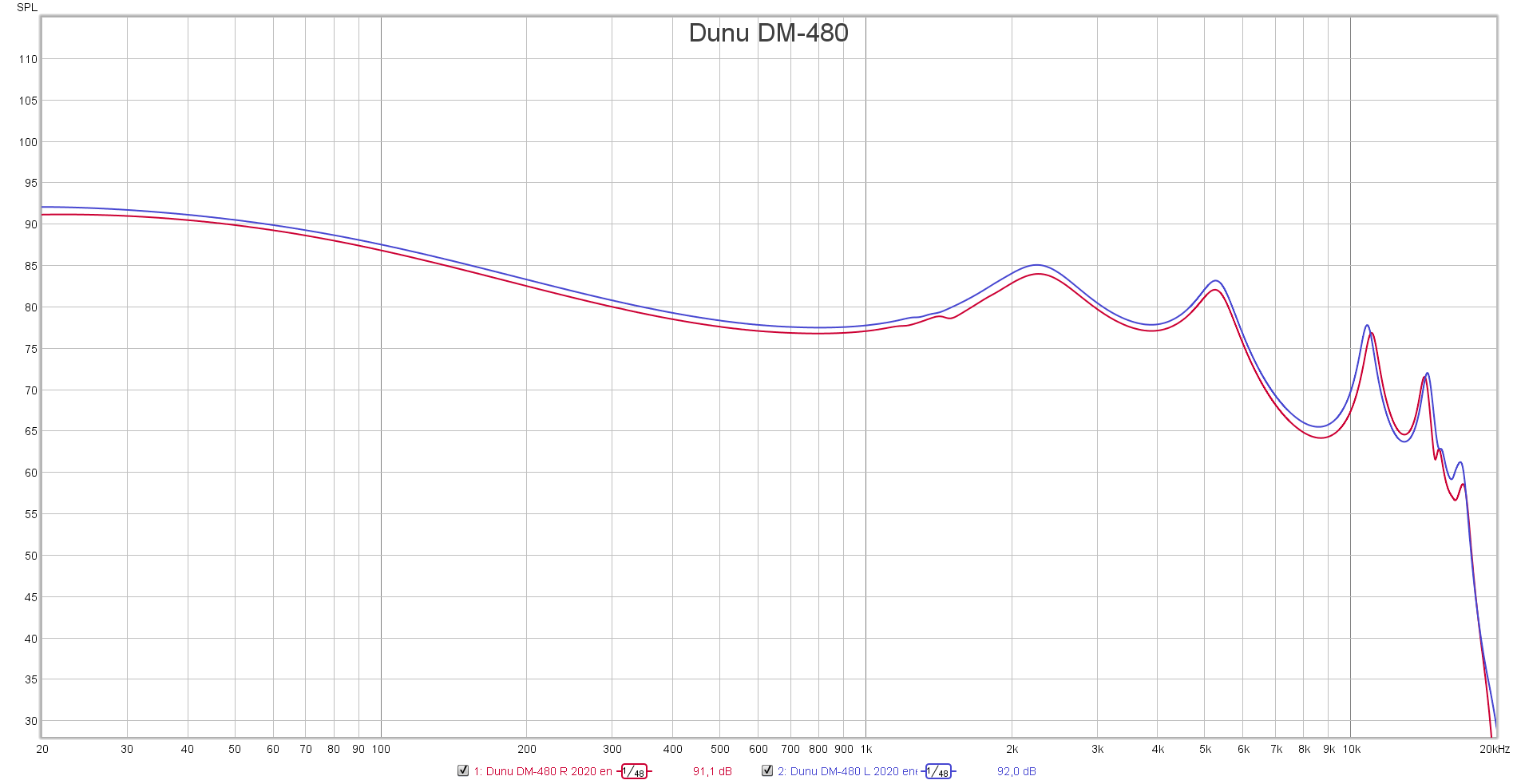








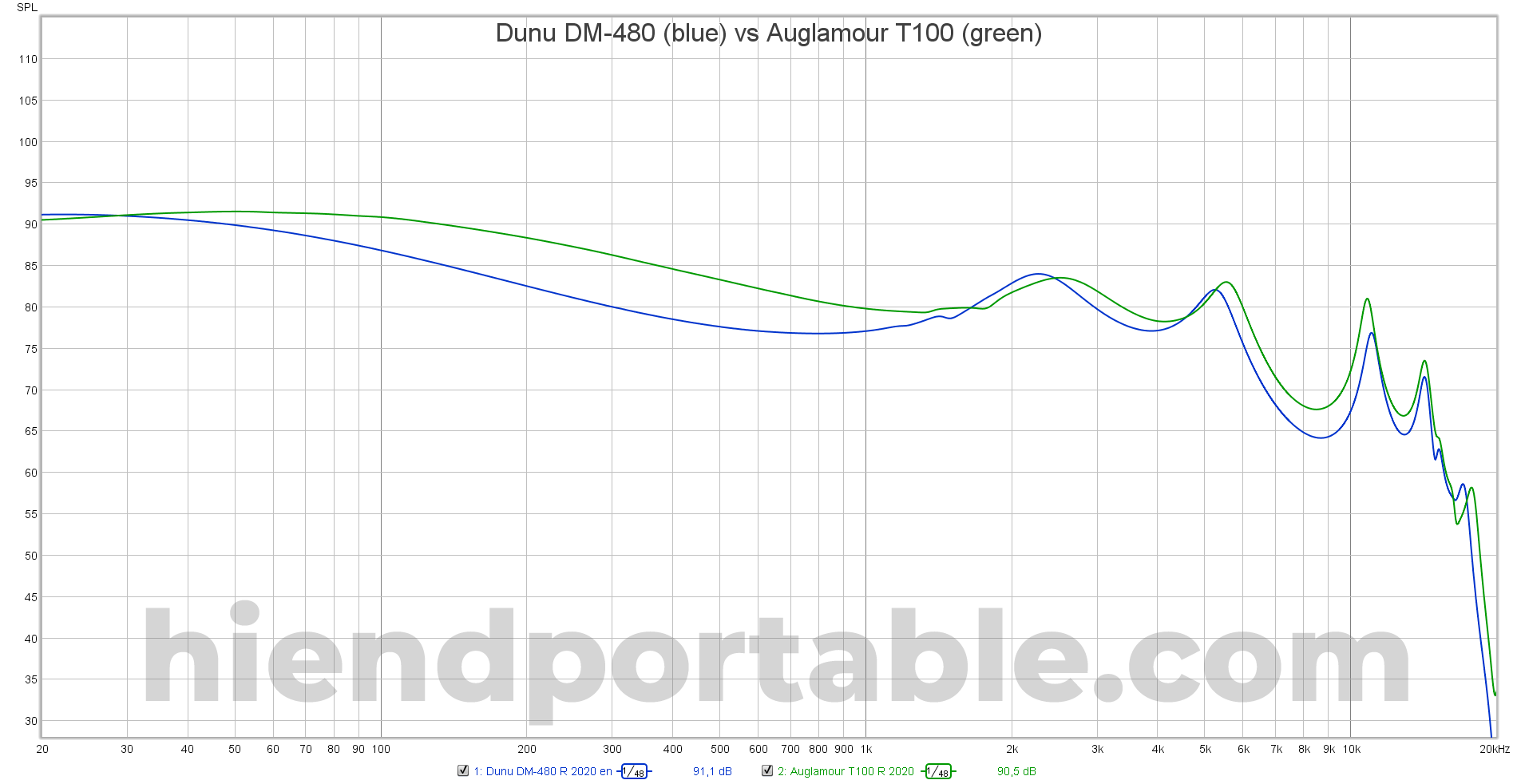





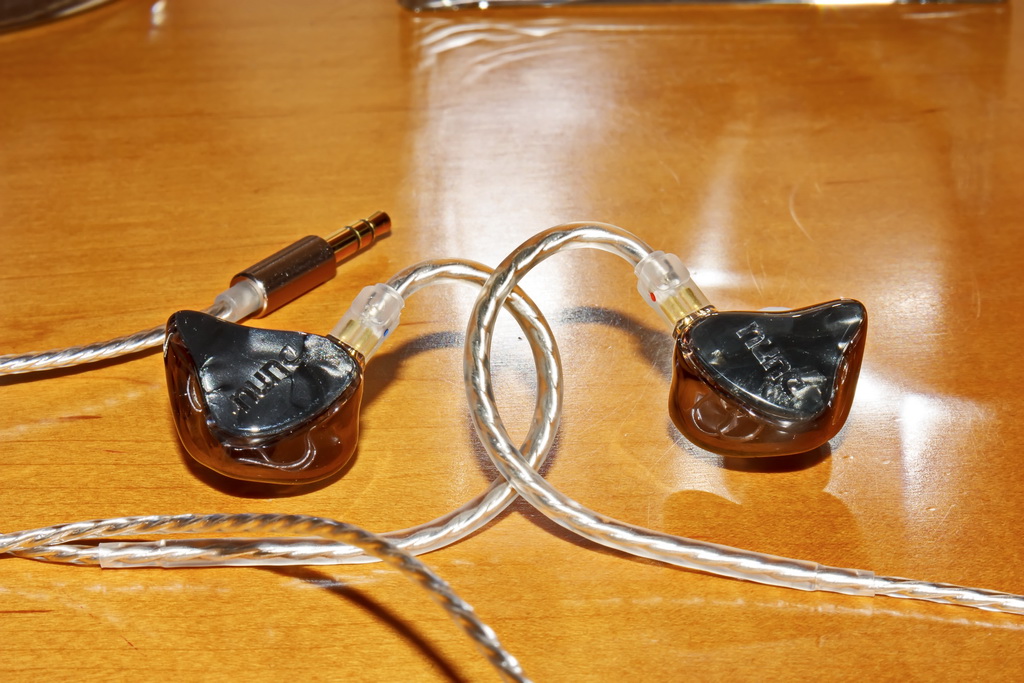
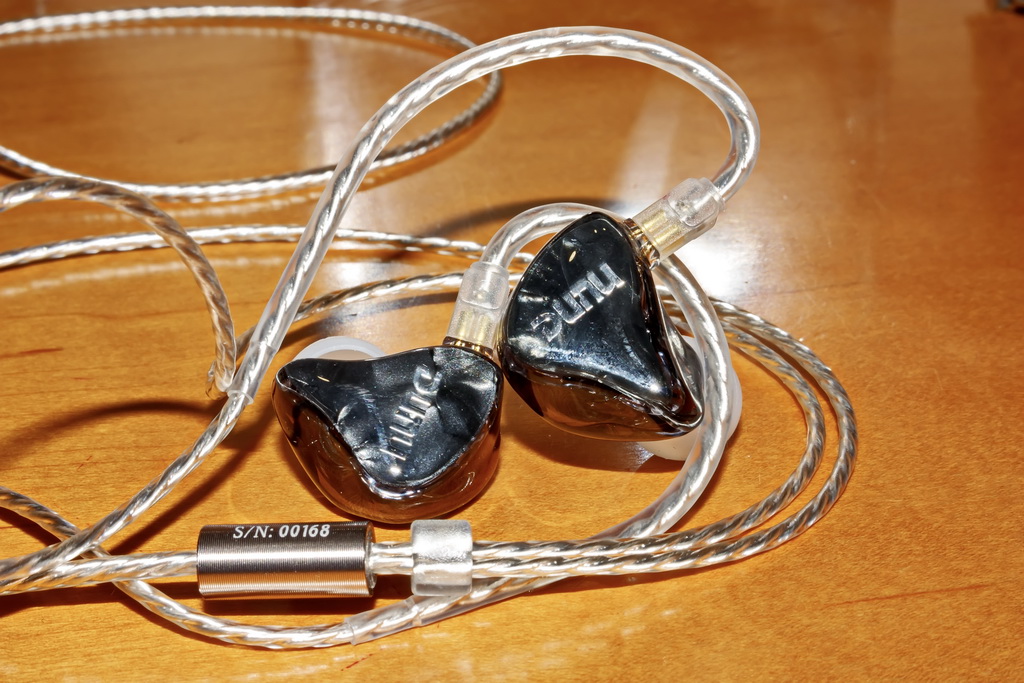
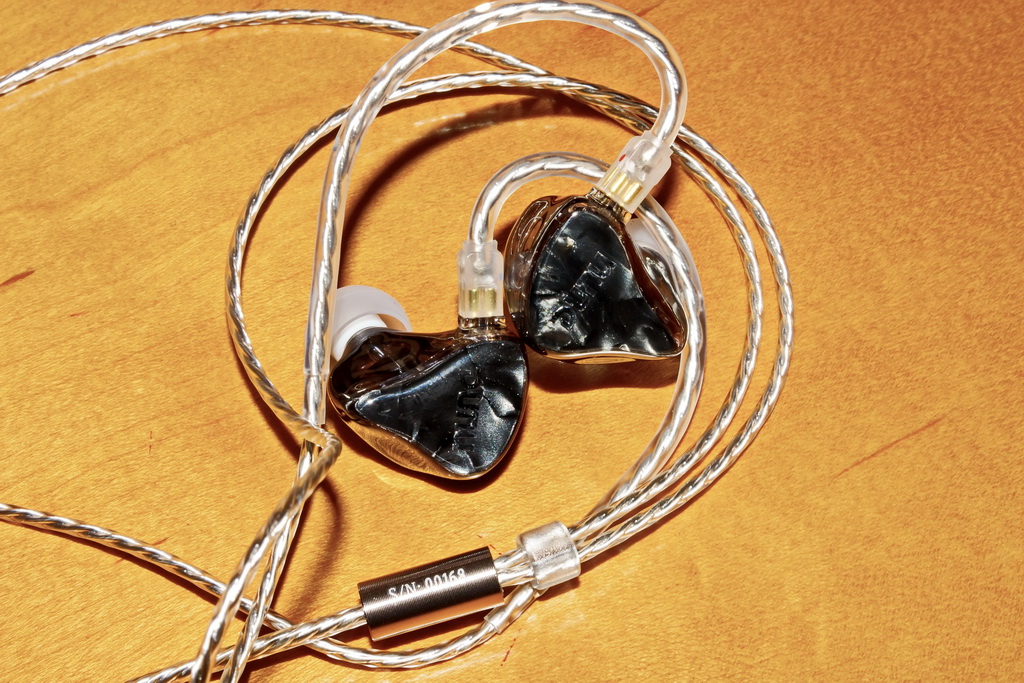
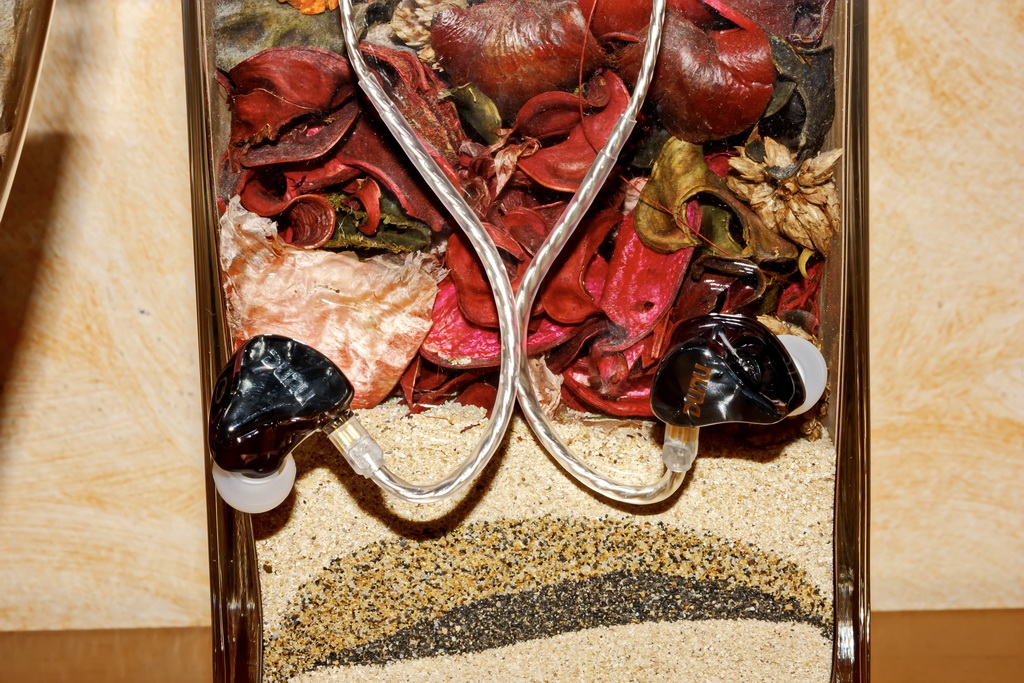
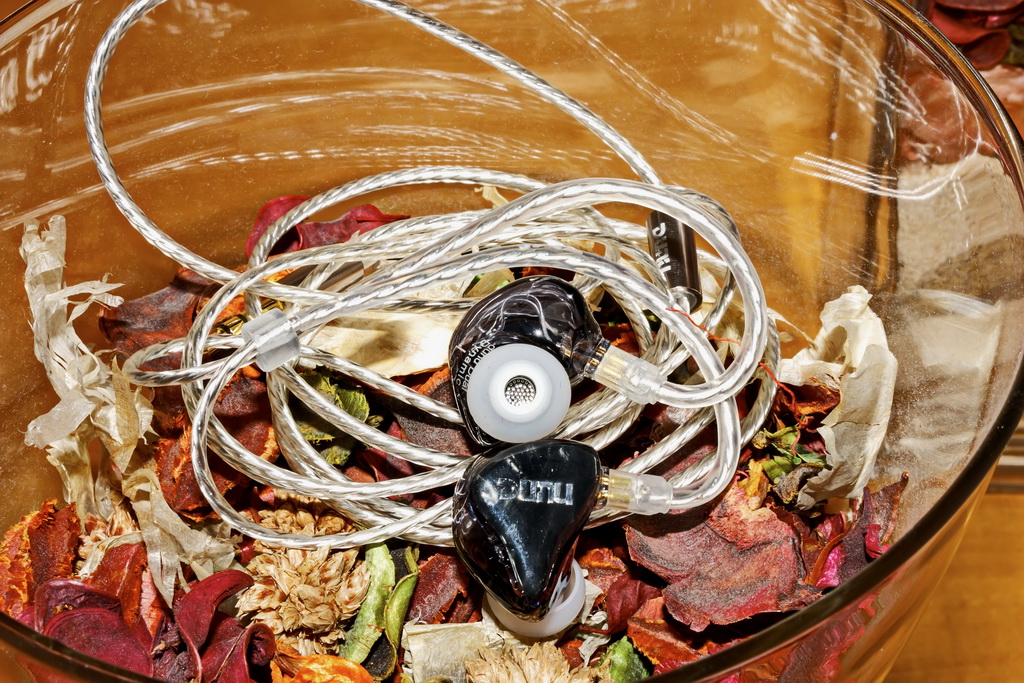

 Have you tried any upgraded different cable?
Have you tried any upgraded different cable?

























